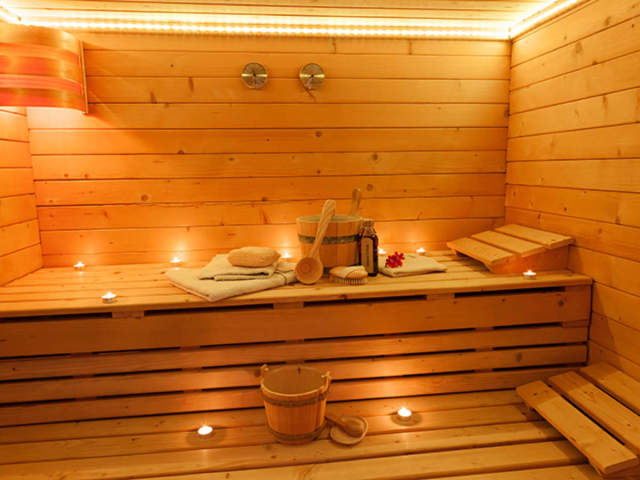A sauna, or sudatory, is a small room or building designed as a place to experience dry or wet heat sessions. The steam and high heat make the bathers perspire. Tampere, the third largest city of Finland, has been officially declared the "Sauna Capital of the World".
The oldest-known saunas in Finland were made from pits dug in a slope in the ground and primarily used as dwellings in winter. The saunas featured a fireplace where stones were heated to a high temperature. Water was thrown on the hot stones to produce steam and to give a sensation of increased heat. This would raise the apparent temperature so high that people could take off their clothes. The first Finnish saunas were called savusaunas, or smoke saunas. These differ from present-day saunas in that they were heated by heating a pile of rocks called kiuas by burning large amounts of wood about 6 to 8 hours and then letting the smoke out before enjoying the löyly, or sauna heat. A properly heated "savusauna" gives heat up to 12 hours.
Although present sauna culture is more or less related to Finnish culture, their evolution happened around the same time both in Finland and the Baltic countries - which also value daily sauna usage. The sauna became very popular especially in Scandinavia and the German speaking regions of Europe after the Second World War. German soldiers had experienced Finnish saunas during their fight against the Soviet Union on the Soviet-Finnish front of WWII, where they fought on the same side. Saunas were so important to Finnish soldiers that they built saunas not only in mobile tents, but even in bunkers. After the war, the German soldiers brought the habit back to Germany and Austria, where it became popular in the second half of the 20th century. The German sauna culture also became popular in neighbouring countries such as Switzerland, Belgium, the Netherlands and Luxembourg.

